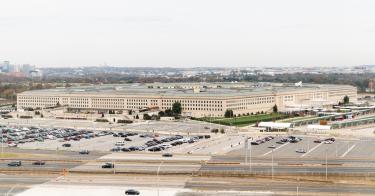Each year, as Oct. 1 approaches, the Pentagon engages in a frenzied drive to spend all the operations and maintenance funding Congress has provided. Any funds not spent by Sept. 30 evaporate.
Strangely enough, it’s by design. Congress stipulates that nearly 40% of the Defense Department’s budget must be fully spent by the end of the fiscal year or it’s lost. Congress likes to keep these funds on a tight leash to preserve the importance of its “power of the purse.”
But that requirement drives a lot of irrational behavior and poor decisions. Operating under continuing resolutions for 14 of the last 19 years,DOD typically finds itself under the gun to execute its planned funding. So when the year’s funding doesn’t arrive until January and must be spent by October, it causes a cascade of problems.
Come August and September, procurement and budget offices become swamped with requests to finalize contracts and purchases. There is less time for investigating multiple options or alternative sources.
In the Defense Department, the mission always comes first. And as the fiscal year progresses, the administrative mission becomes to spend 100% of the money. This increases the odds of waste slipping through. At the very least, decisions made under pressure are never as efficient as those that have more time.
American economists Jeffrey Liebman and Neale Mahoney found that IT purchases made in the last few months of the fiscal year were of lower quality, as judged by the chief information officers from the organizations. They also found that projects started in the last week of the fiscal year were 2.3-5.6 times more likely to receive a lower quality score.
It’s bad enough when money expires at the end of the fiscal year, but those organizations that fail to spend their money are typically penalized by having their future budgets reduced proportionately. This “use it or lose it” practice resonates with anyone who has spent time in the service. The phenomenon adds to the already high pressure organizations feel to spend their allotted amounts.
When my son was in the service, he forwarded me an email from his superior—an Army major who, as the battalion executive officer, represented the top of his food chain. The note read in part, “you guys need to get your spending up—you are lagging WAY behind. Spend your money, or I WILL.” Needless to say, the rate of spending went up. On what? That’s beside the point.
At last there is some ground for optimism. During the July 1 House Armed Services Committee mark-up of the 2021 National Defense Authorization Act, Rep. Mac Thornberry, Texas Republican, introduced an amendment to allow the Defense Department to keep a portion of its unused 2021 operating funds and use them in 2022. If approved, it would go a long way toward relieving the unremitting annual pressure to spend.
It’s a long shot, given the vagaries involved in getting an amendment through the process and made law, but this proposal reflects the most serious attempt to tackle this longstanding issue in years.
The Defense Department gets about $288 billion in one-year operating funds each year. If Congress gave the Pentagon authority to roll-over 5% of those funds, about $14 billion, that flexibility would provide an enormously valuable “relief valve” easing much of the pressure that drives poor decision making.
Achieving and maintaining a strong national defense relies on the proper amount of investment and stewardship of the funds to ensure that the military gets the most value. Allowing the Pentagon to rollover a portion of the operating funds they are provided is an easy (and free) reform that would pay handsome dividends.
This piece originally appeared in The Washington Times



